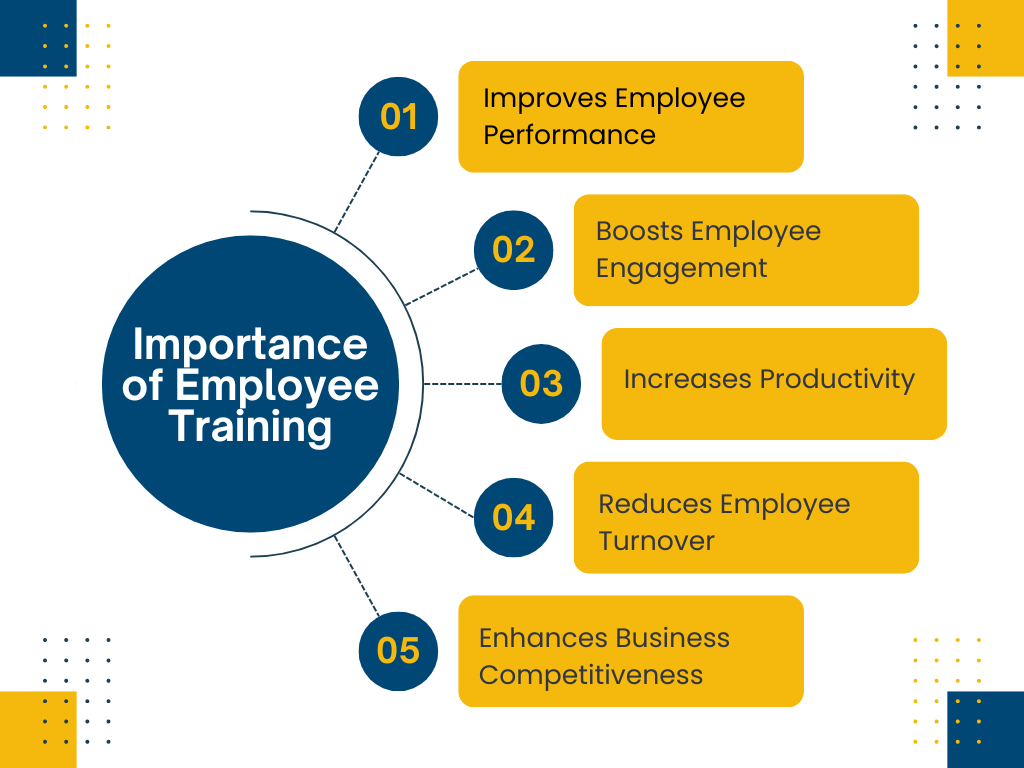The Importance of Employee Training and Development in the Workplace
Imagine walking into a workplace where employees struggle to complete tasks, make frequent mistakes, and lack motivation. Frustrating, right? That’s what happens when organizations neglect employee training and development.
Whether you’re running a small business or managing a large corporation; investing in your workforce is one of the smartest decisions you can make. But why is training so important, and how does it impact your company’s success?
Let’s dive in.
What is the importance of employee training and development?

Employee training is a structured process that equips staff with specific skills and knowledge to perform their jobs effectively.
Employees are the backbone of any organization. Without proper training, they may feel lost, unproductive, or even dissatisfied with their jobs.
Here’s why training should be a top priority:
- Improves Employee Performance: Well-trained employees work more efficiently and make fewer mistakes.
- Boosts Employee Engagement: When employees feel valued through training, they become more committed to the company.
- Increases Productivity: Employees with the right skills can complete tasks faster and with greater accuracy.
- Reduces Employee Turnover: Providing growth opportunities encourages employees to stay, saving recruitment costs.
- Enhances Business Competitiveness: Companies that prioritize training stay ahead in their industries.
There are more benefits of employee training here.
Types of Employee Training Programs
There’s no one-size-fits-all approach to training. Depending on your industry and workforce needs, you may consider:
| Type of Training | Purpose |
|---|---|
| On-the-Job Training | Learning while performing tasks |
| Soft Skills Training | Improving communication, teamwork, and leadership |
| Technical Training | Gaining industry-specific skills |
| Compliance Training | Ensuring employees follow laws and regulations |
| Leadership Training | Preparing employees for management roles |
Overcoming Common Training Challenges
While training is essential, companies often face challenges in implementation. Here are some common issues and solutions:
- Budget Constraints: Consider online training or mentorship programs as cost-effective alternatives.
- Employee Resistance: Show employees how training benefits their careers.
- Lack of Time: Offer flexible learning options like e-learning and microlearning sessions.
- Measuring Effectiveness: Use employee feedback and performance assessments to evaluate success.
The Role of Technology in Employee Training and Development in 2025
Technology has transformed the way organizations train employees. From e-learning platforms to virtual reality (VR) training, businesses can now provide interactive and engaging learning experiences. Some benefits include:
- Career development: It helps many people to develop professionally in their career. As more skills are learnt, employees advance in their careers.
- Enhanced productivity: When new technological tools are used to train employees, it makes them more productive and keeps them updated in their field.
Conclusion
Investing in employee training and development isn’t just about ticking a box—it’s about building a competent, engaged, and loyal workforce. When employees grow, businesses thrive.
So, how do you know you need this training? Kindly fill this evaluation form (here)
What’s your thoughts about training in the workplace? Share in the comments section

